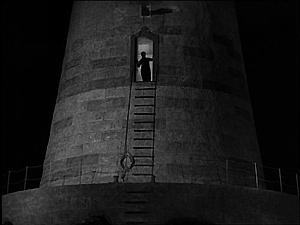Death in Splendid Isolation: Lighthouse Mysteries
This’ll sound like an extreme digression, but be patient.

1890-1900 engraving of Helgoland (Wikipedia).
When I was in high school, I visited my aunt in Germany, and one of the touristy excursions we took was Helgoland, a boulder in the ‘south eastern corner’ of North Sea – basically, kind of bloody nowhere, until you dig into its history (and check out a map) and find it’s an isle within an archipelago that was of strategic importance to the Germans, the Napoleonic French, the Brits, and the Germans again, who transformed it into a fortress during WWII. Allied bombers rained 7,000 deadly orbs in the isle, and prior to its return to Germany in 1952, Helgoland was used as a munitions target.
I travelled to the isle by boat, and I remember not finishing my goulash because giant waves thwacked the side of the ship, and the back & forth rocking was not pleasing to someone prone to motion illness. (It was this trip which formed my eureka moment & layman’s diagnosis that I’m prone to seasickness.)
When the ship arrived at the isle’s dock, we saw an interesting slope packed with colourful houses, and at the top of the extending boulder you could gaze 360 degrees outward at the sea, and see many birds which have made the rock a destination for ornithologists.
Helgoland shares a similar relationship to the isolated coastal isles of Britain, Scotland, and Ireland – tight communities, and in the case of the Hebrides, sometimes harsh weather which adds to the mystique of a far off place where humans settled eons ago, and eked out tough lives without direct links to the mainland.
Shrink the population down to 3 lighthouse keepers, reduce mainland contact by boat and radio to seasonal, and you have the perfect environment for a mystery tale. It is a noble and rare profession to man a lighthouse and live with a philosophy and routines that don’t drive you crazy for long stretches.
That most lighthouses have become automated isn’t a surprise – it reduces cost, and flying by helicopter can parachute a troubleshooter or techie to fix any issues – but there is something romantic of a quiet life on a rock, alerting ships of danger, and the maintenance of the lighthouse, and one’s own routines which must instill and steep a special kind of stoicism.
 And yet that lonely post has proven magnetic for scribes of murder mysteries. During his pre-Emeric Pressburger years, Michael Power’s breakthrough film was The Edge of the World (1937), set in the St, Kilda archipelago, but a couple of years earlier he made the murder mystery The Phantom Light (1935).
And yet that lonely post has proven magnetic for scribes of murder mysteries. During his pre-Emeric Pressburger years, Michael Power’s breakthrough film was The Edge of the World (1937), set in the St, Kilda archipelago, but a couple of years earlier he made the murder mystery The Phantom Light (1935).
The most striking moment in the film isn’t the revelation of the killer, but of a boat moored off the rock upon which the lighthouse rests, and the crew’s efforts to climb onto the rock in spite of insane waves.
Lighthouses can become areas of safety – for a while, the carnivorous plants in The Day of the Triffids (1962) are kept at bay – but they’re too irresistible as shells that house secrets, danger, or transform amiable inhabitants into cold-blood killers.
In 1900, the three men in charge of the lighthouse on Scotland’s Flannan Isle vanished, and not unlike the recent first season of The Terror (2018), using a real-life mystery and the utter absence of tangible clues or plausible theories gave writers the perfect setting to craft a drama, supported by period detail and the technological limitations of a bygone era.

The Flannan Isle lighthouse that may have drawn 3 keepers to their doom…
The Vanishing / aka Keepers (2018) isn’t perfect – there are pacing issues, and as often happens in these dramas, the director forgets the location is a secondary character – but the human characters experience bouts of plausible paranoia: your radio is wonky, you no longer fully trust your brethren, and someone is out there in the darkness, waiting for your guard to dissolve.
I’ve paired Lionsgate’s Blu-ray release of The Vanishing with The Phantom Light, the latter taken from the KQEK.com archives and originally released on DVD in 2008 by MPI in a fun little collection called Classic British Thrillers.
If I dig out those photos of Helgoland, circa the 1980s, I’ll post them; there’s probably a shot that my aunt took of me looking very ashen from never finishing that goulash, but next I’ll have a review of Wim Verstappen’s Blue Movie (1971) from Cult Epics, Jack the Ripper (1959) from Severin, and the 2018 franchise entries The Predator and Halloween.
Thanks for reading,
Mark R. Hasan, Editor
KQEK.com
Category: EDITOR'S BLOG

















Connect